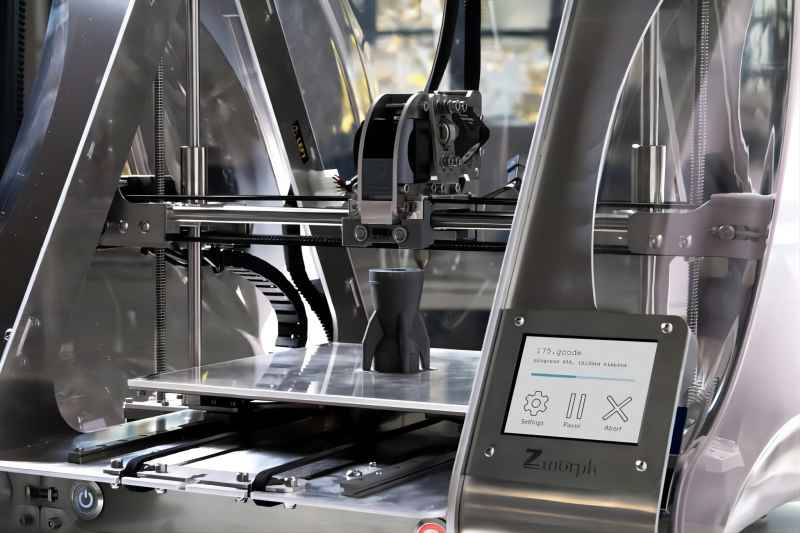CNC Machining vs. 3D Printing: Which Manufacturing Method Reigns Supreme?
In today’s rapidly evolving manufacturing landscape, both CNC machining and 3D printing technologies offer swift and precise parts production across diverse industries. However, determining the optimal method for manufacturing can be a nuanced decision. Understanding the nuances between CNC machining and 3D printing is essential for making informed choices.
Exploring the Distinctions Between CNC Machining and 3D Printing
CNC machining and 3D printing represent distinctive manufacturing approaches, differing in processes, materials, industry applications, and cost considerations. CNC machining operates through subtractive manufacturing, carving a final product from a solid block or sheet, thereby offering precision and versatility across various materials. Conversely, 3D printing follows an additive process, layering material to build the product, excelling in swiftly creating intricate designs. The choice between these methods hinges on factors such as material compatibility, design complexity, industry requirements, and cost-effectiveness. Let’s delve deeper into these aspects to assist in selecting the optimal method for your needs.
Process Disparities: CNC vs. 3D Printing
One significant disparity between CNC machining and 3D printing lies in their manufacturing processes. Although the end results may be similar, the pathways to achieve them differ markedly.
CNC Process
CNC machining employs a subtractive process wherein a CNC machine precisely removes material from a solid block. This method excels in crafting intricate and detailed parts with exceptional precision, particularly when utilizing 5-axis CNC machines capable of three-dimensional cutting. Despite potentially slower prototyping, CNC machining proves highly efficient for large-scale production, thanks to simultaneous cutting processes that contribute to time and cost savings. Its adaptability to high-volume manufacturing makes it a dependable choice for generating substantial quantities of parts with consistent quality and accuracy. Moreover, CNC machines accommodate a broader range of material choices and surface finish options compared to 3D printing, rendering them well-suited for industries necessitating robust parts capable of withstanding significant pressure, heat, friction, and overall wear.
3D Printing Process
The 3D printing process is additive, constructing objects layer by layer, which is advantageous for crafting intricate and complex designs. This method affords significant design freedom, enabling the creation of structures that might be challenging or unattainable with traditional manufacturing techniques. Additionally, the additive process is less wasteful than subtractive processes, as it produces fewer scraps and wasted materials. When applied to prototyping and small-scale production, 3D printing is typically faster due to its layer-by-layer construction, facilitating rapid iteration. However, a notable drawback is the limited range of materials and surface finish options compared to CNC machining. Thoughtful material selection is crucial, and post-processing steps may be necessary to achieve specific surface finishes, potentially altering both the appearance and functionality of the final printed object.

Material Disparities: CNC vs. 3D Printing
CNC machining utilizes various metals, plastics, and composites, including durable materials like stainless steel and titanium. Conversely, 3D printing has limited material options, commonly employing various plastic filaments and resins. Here’s a breakdown of the material disparities between CNC and 3D printing.
CNC Materials
CNC machining can utilize a diverse range of materials, including, but not limited to:
Aluminum Brass Copper Stainless Steel Titanium Acrylic Wood MDF (Medium-Density Fiberboard) PVC (Polyvinyl Chloride) Delrin (Polyoxymethylene) This extensive selection of materials caters to applications demanding robust parts, high precision, and minimal warping. CNC machining employs more durable plastics and resins than those typically used in 3D printing applications.
3D Printing Materials
Various types of 3D printers exist, typically employing either spooled filament or liquid resin cured with UV light. Potential materials for 3D printing include:
PLA (Polylactic Acid) ABS (Acrylonitrile Butadiene Styrene) PETG (Polyethylene Terephthalate Glycol) TPU (Thermoplastic Polyurethane) Nylon Polycarbonate PVA (Polyvinyl Alcohol) Woodfill Metal-filled Filaments Carbon Fiber-filled Filaments Extruded clay and ceramics These printing materials are available in various colors and textures, offering freedom in the appearance of the finished product.
Industry Disparities: CNC vs. 3D Printing
CNC Industries
CNC machining is renowned for its durability and ease of scaling up for mass production, making it a preferred choice in industries requiring robust and precisely dimensioned parts. These industries include automotive, aerospace, medical devices, electronics, tool and die making, oil and gas, defense, energy, custom furniture manufacturing, automated manufacturing, and consumer goods.
3D Printing Industries
Conversely, 3D printing finds applications across virtually every industry. With the ability to swiftly create prototypes and make cost-effective adjustments, 3D printing proves invaluable for small batches, particularly in crafting ceramic parts. This process allows for extensive customization, facilitating the creation of multiple part variations before settling on the optimal design.
Cost Disparities: CNC vs. 3D Printing
In direct comparison, 3D printing is more budget-friendly than CNC machining. However, cost-effectiveness can vary based on the scale and needs of your manufacturing operations. When handling smaller quantities or prototypes, 3D printing tends to be more economical due to its lower initial setup and tooling costs. CNC machining emerges as the more cost-efficient choice for larger quantities, offering superior precision, material strength, and the ability to meet specific material requirements. Considering these factors, investing in both CNC and 3D printing technologies may prove to be a strategic approach for your business.
In the ongoing CNC vs. 3D printing debate, your final choice depends on your specific manufacturing requirements. Opt for 3D printing when rapid prototypes or non-essential parts for smaller-scale projects are needed. However, if high precision or larger-scale production is necessary, CNC machining emerges as the optimal option.
Dongrun Casting have 20000 square meters facility houses and 200 production & test equipment, From quotation and tooling design to casting and finished machining, we can work with you at every stage. We serves wide range of industries-from Fortune 500 corporations to small and midsize OEMs. Our products includes: Automotive&Trucking, Electric Utility & Communications, Metering System, Hydraulic Industry, Medical Devices, Lighting, Fuel and Gas Pressure, Furniture parts.
More Details : www.dongruncasting.com
